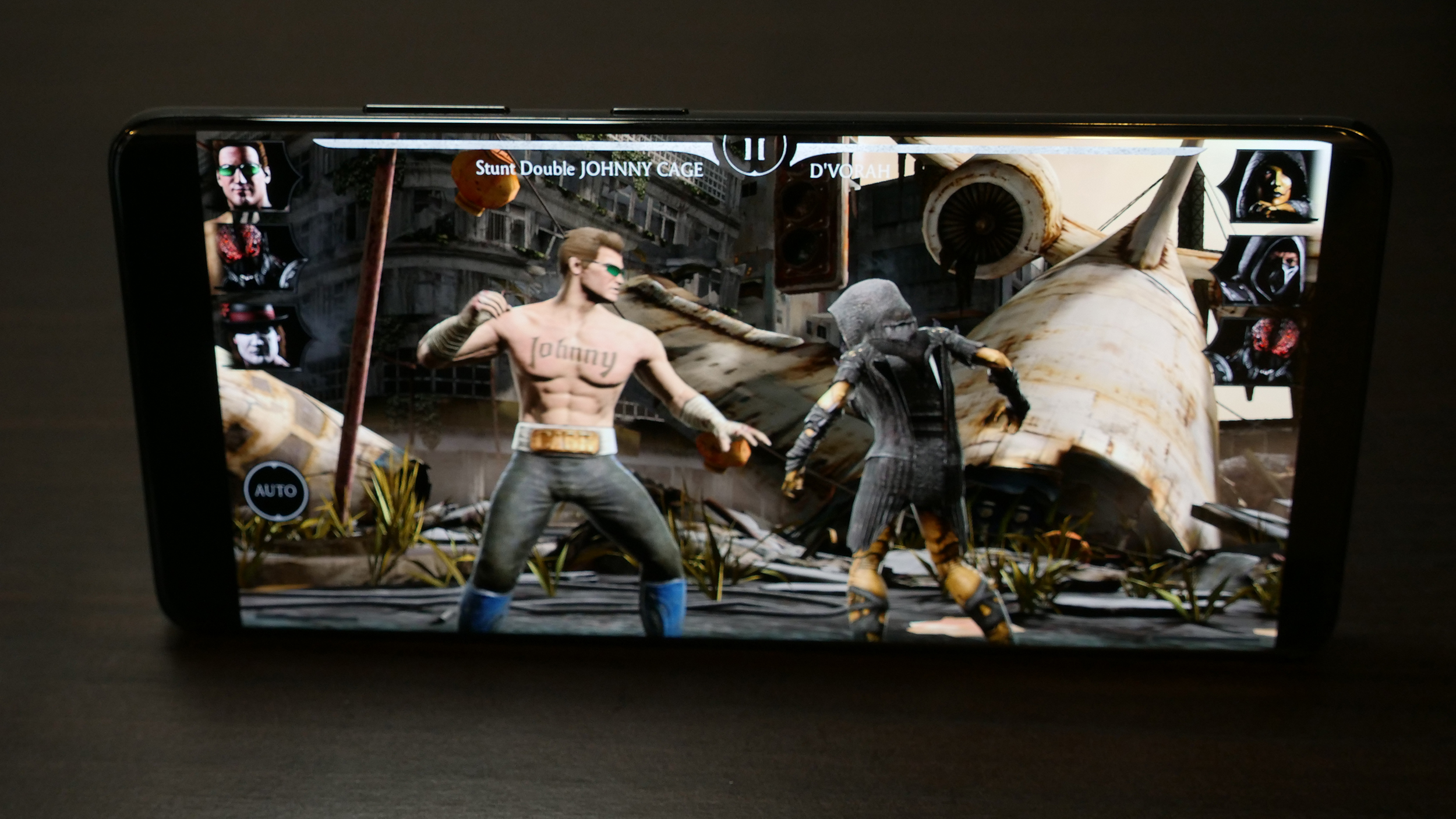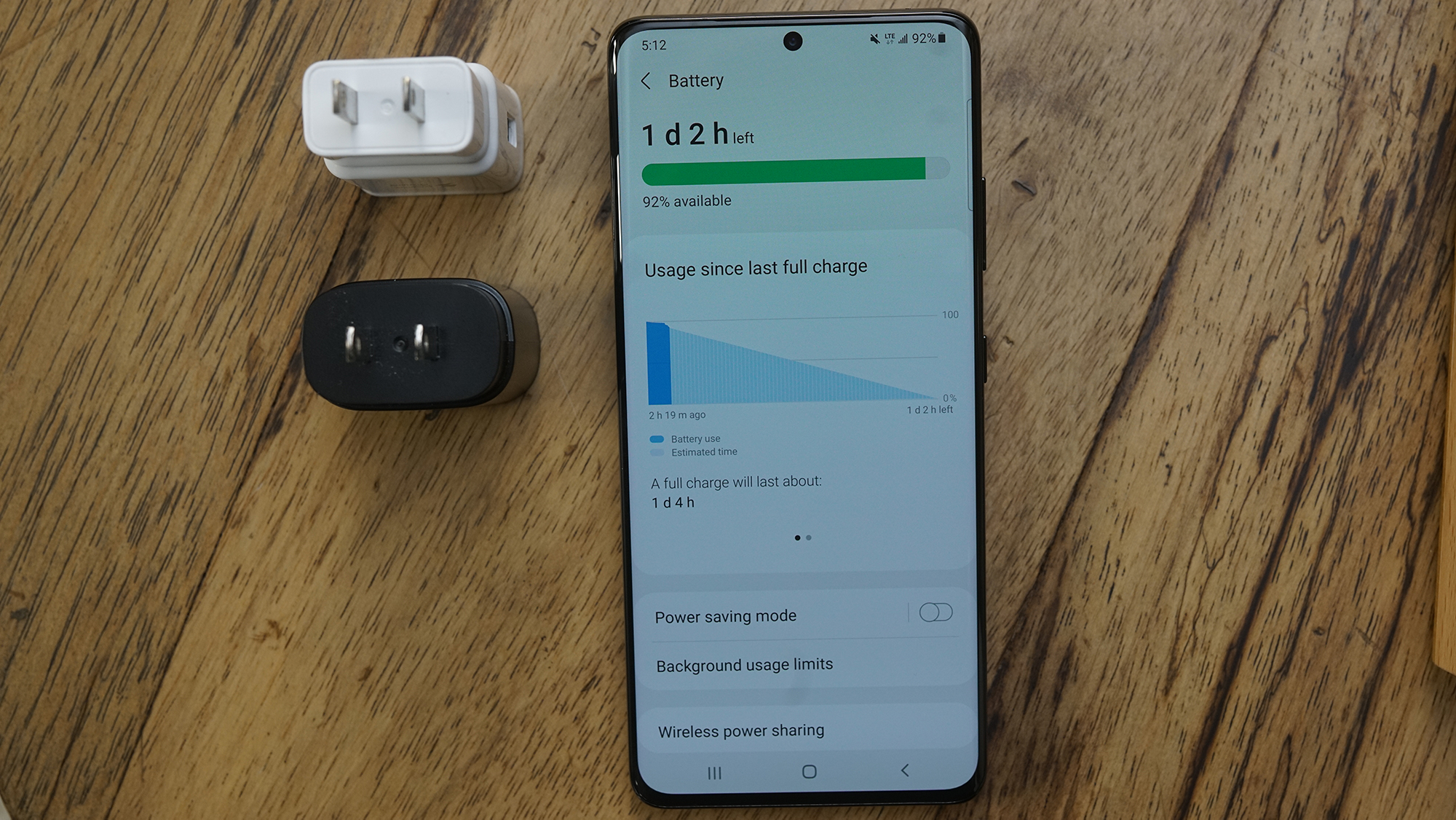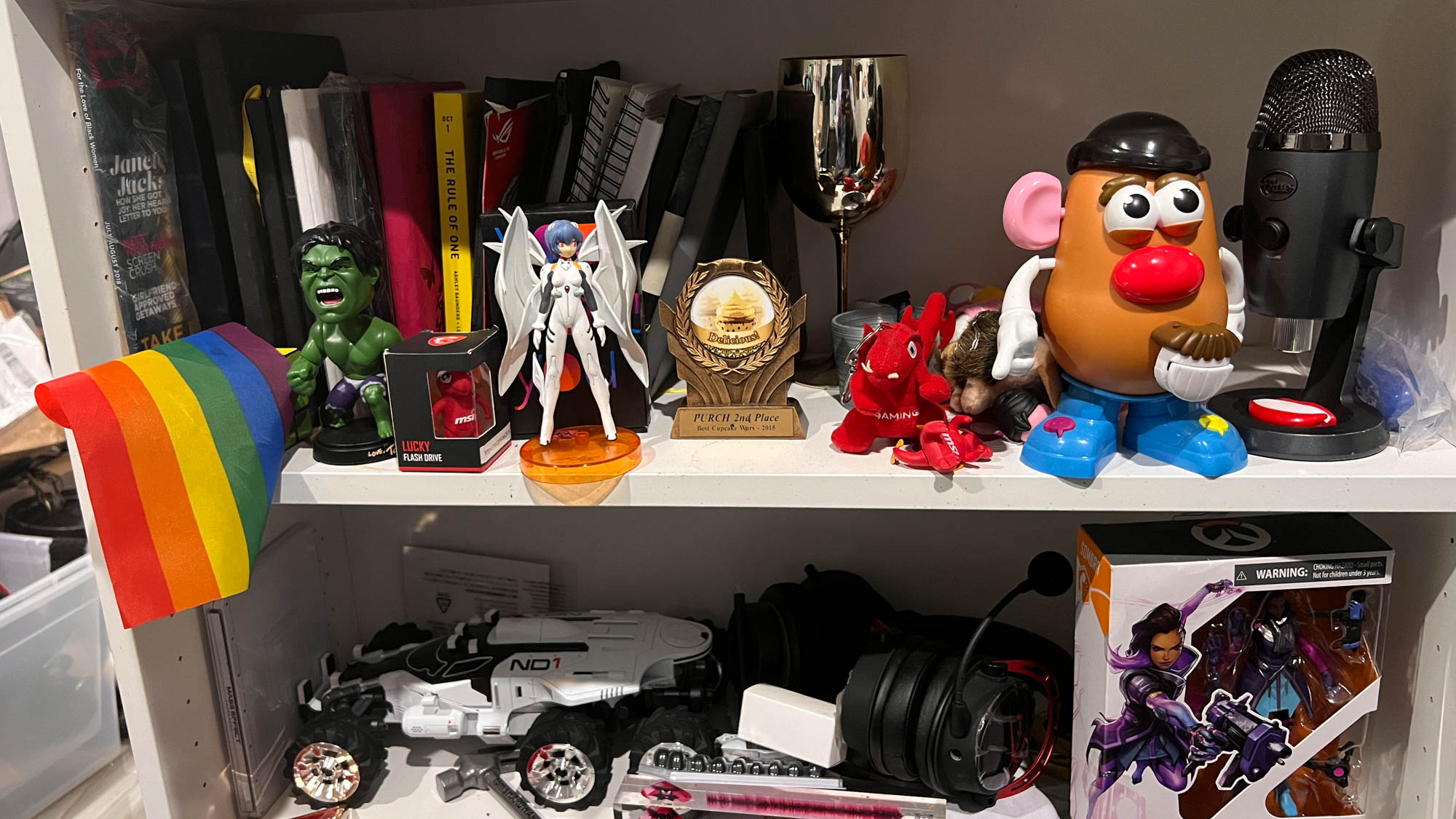iPhone 13 Pro Max vs. Galaxy S21 Ultra: Which phone is best?
Which of these massive flagship phones claims the crown?

The Samsung Galaxy S21 Ultra is our favorite high-end Android phone of 2021, and the iPhone 13 Pro Max is a fitting challenger with a nearly identical screen size and now 120Hz refresh rate support to match.
While Samsung’s foray into the foldable world gives fans a unique alternative, for those just looking for a traditional flagship, the Galaxy S21 Ultra is the strongest competition against the iPhone 13 Pro Max. This year, both made significant advances with their cameras resulting in slightly different advantages that may tip the scales depending on your preferences.
While some categories definitively tip in favor of one over the other, there are plenty of grey areas to sort out that may be the difference-maker between you choosing the Galaxy S21 Ultra or the iPhone 13 Pro Max.
- Best smartphones in 2021
- Best budget phones in 2021
- Best mobile phone deals in October 2021
iPhone 13 Pro Max vs. Galaxy S21 Ultra: price and value
The iPhone 13 Pro Max starts at $1,099 for a 128GB model with 6GB of RAM. You can upgrade to 256GB, 512GB or a new 1TB option. It’s an extra $100 for the 256GB model, which is necessary for the new ProRes video feature coming to iPhone 13 Pro Max later this year. Add another $200 for the 512GB and 1TB options, maxing the phone out at $1,599.
The Galaxy S21 Ultra starts at $1,199 for the 128GB model with 12GB of RAM. For $1,249, you can bump up to 256GB, and the top-end 512GB model, which also boasts 16GB of RAM, is $1,379.
The price difference quickly becomes a wash once you move beyond the base storage tier, which I would recommend doing for both of these phones. It’s also worth noting that, as the Galaxy S21 Ultra has been available since January, discounts are often available. In contrast, the iPhone 13 Pro Max discounts are strictly for trade-in deals.
Overall, I’m ruling this category a draw as pricing is almost identical on the models you should be buying.
Sign up to receive The Snapshot, a free special dispatch from Laptop Mag, in your inbox.
Winner: Draw

iPhone 13 Pro Max vs. Galaxy S21 Ultra: design
Both of these phones have managed a somewhat rare feat in today’s smartphone world by carving out a unique look. The iPhone 13 Pro Max follows the squared-off aesthetic Apple brought back with the iPhone 12, while the Galaxy S21 Ultra introduced the new Contour Cut Camera housing that gives the phone a distinct profile.
Opinions on the look of each phone will naturally differ; I see both as a massive improvement over their previous designs, which just blended in with the rest of the rounded rectangular designs permeating the smartphone market. The lone blemish on the iPhone 13 Pro Max’s design remains its unsightly notch. Yes, you learn to ignore it, and it’s 20% smaller this year, however, it’s still aesthetically and functionally unfortunate.

Both phones are reasonably comfortable to hold, despite their massive size that I’ll get to in a moment, and each offers comparable IP68 dust and water resistance. While the new camera housing on the Galaxy S21 Ultra is an improvement, it remains massive and would press me to use a case with the phone. But the same can be said of the iPhone 13 Pro Max, which saw its camera array grow larger yet again this year.
Taking a look at the phones by the numbers, the iPhone 13 Pro Max is slightly smaller at 6.3 x 3.1 x 0.3 inches compared to 6.5 x 3 x 0.35 inches for the Galaxy S21 Ultra. However, the S21 Ultra is lighter at 8.1 ounces to the 13 Pro Max’s 8.5 ounces. Both are enormous cruiser-class phones that won’t fit nicely in many pockets, but you know what you are in for with a 6.7+ inch screen unless you are buying a foldable.
There’s no objective winner in this category; both phones are striking in their own way and present similar difficulties and advantages regarding their overall size.
Winner: Draw

iPhone 13 Pro Max vs. Galaxy S21 Ultra: display
The iPhone 13 Pro Max features a 6.7-inch Super Retina XDR OLED display with ProMotion and a 2778 x 1284-pixel resolution. The Galaxy S21 Ultra is slightly larger at 6.8 inches, but the Dynamic AMOLED 2X display offers a considerably higher WQHD+ (3200 x 1440) resolution and matches the iPhone’s adaptive refresh rate ranging from 10Hz up to 120Hz.
Both displays are among the best in their class. As is often the case with premium phones, choosing between them is a matter of which is more outstanding rather than a true winner and loser. In our review of the iPhone 13 Pro Max, we noted that while its color reproduction may be more natural, it isn’t as appealing as Samsung’s more saturated Super AMOLED. The resolution tips in favor of Samsung, and the Galaxy S21 Ultra delivers that full resolution even when running at 120Hz, making for a sharper image.
While Apple’s 120Hz ProMotion tech matches up with the Galaxy S21 Ultra’s, iOS developers still need to bring full support for it to their apps. While the iPad Pro has offered ProMotion for several years now, it’s new to the iPhone and limited to the iPhone 13 Pro and iPhone 13 Pro Max. This is likely a short-lived advantage for Samsung as Apple developers are generally quick to adopt the company’s new features, so full support for ProMotion will likely be widespread in the most popular apps in short order.

Moving to the colorimeter results, the iPhone 13 Pro Max covers 77% of the DCI-P3 color gamut, a score that the Galaxy S21 Ultra outperformed even in its less saturated Natural mode with 81.4%. Turn to its Vivid color setting, and you would likely see something closer to the 143% of the Galaxy Note 20 Ultra or 150.4% of the Galaxy S21 Plus.
Apple cranked up the brightness considerably on the entire iPhone 13 lineup, and it was enough to push the iPhone 13 Pro Max to 837 nits of brightness which is just beyond the Galaxy S21 Ultra’s 821 nits. Both will be perfectly visible in bright sunlight, but it’s an impressive feat from Apple regardless.
This category is closer than it has ever been between these two, but Samsung retains the edge. The Galaxy S21 Ultra offers a higher resolution, more impressive color reproduction that you can tune to a Natural or Vivid look, and is negligibly behind the iPhone 13 Pro Max in brightness.
Winner: Galaxy S21 Ultra

iPhone 13 Pro Max vs. Galaxy S21 Ultra: performance
The Galaxy S21 Ultra was the first phone to launch with the Snapdragon 888 processor this year, and briefly reigned as the top-performing Android phone. Still, nothing matches the A15 Bionic in the iPhone 13 Pro Max. Even with double the iPhone 13 Pro Max’s RAM (12GB vs. 6GB), it doesn’t hold a candle to Apple’s juggernaut.
To be clear, in real-world usage, that advantage won’t mean much to most people right now. We loaded up dozens of Google Chrome tabs, apps, picture-in-picture videos, and games in our review of each phone, and neither skipped a frame in delivering all of that content. Where you are going to see more of a difference is in longevity.
The iPhone 13 Pro Max has so much performance headroom that it could be three years before we see it stressed by any app or game. The Galaxy S21 Ultra will hit that mark much sooner. If you switch phones every two years, this isn’t as much of a factor, but if you keep your phone for the long haul, it’s worth considering.

On the Geekbench 5 overall performance test, the iPhone 13 Pro Max achieved an almost unbelievable score of 4,549. The Galaxy S21 Ultra, one of the top-performing Android phones this year, managed a 3,440. Our graphics-focused testing shows where Apple is even further ahead; in the Wild Life Unlimited 3DMark test, the iPhone 13 Pro Max managed 68 frames per second, literally doubling the 34 frames per second of the Galaxy S21 Ultra.
The Adobe Premiere Rush video editing test is a real-world example of Apple’s performance advantage; the iPhone 13 Pro Max finished rendering and exporting a 4K video to 1080p in just 25.1 seconds. The same task took the Galaxy S21 Ultra 1 minute and 3 seconds. As both phones are ideal options for content creators, that kind of time savings from the iPhone 13 Pro Max could be compelling.
While both phones offer excellent performance, this performance round isn’t close: the iPhone 13 Pro Max is the clear winner.
Winner: iPhone 13 Pro Max

iPhone 13 Pro Max vs. Galaxy S21 Ultra: battery life and charging
These massive phones each feature the largest batteries in their respective lineups this year. While the Galaxy S21 Ultra has the edge in pure size with a 5,000 mAh battery compared to the 4,352 mAh battery in the iPhone 13 Pro Max, real-world battery life is a different story.
After a down year with the battery life on the iPhone 12 lineup, Apple came back with a vengeance this year with the iPhone 13 Pro Max offering the longest-lasting battery of any iPhone. In our Laptop Mag battery test, it managed 12 hours and 16 minutes of continuous web surfing on 5G with the screen set to 150 nits of brightness.
Despite its larger battery and comparable adaptive 120Hz display, the Galaxy S21 Ultra falls more than two hours short of its rival at 10 hours and 7 minutes in our test. Dropping the display to 60Hz bumps that up to 11 hours and 25 minutes, but that’s an unfortunate trade-off to make and still leaves you short.
Anything over ten hours is usually sufficient to get you through even a reasonably heavy day of usage, and my experience with the Galaxy S21 Ultra was better than the tests would suggest. Still, there’s no denying that the iPhone 13 Pro Max will outlast it on a charge.

On the subject of charging, neither phone covers itself in glory with only minimal fast charging available. Also, the phones ship with just a charging cable, so you’ll need to purchase that charger separately.
The iPhone 13 Pro Max tops out at 27W charging, but only briefly, because it generally charges at the same 20W as the other iPhone 13 models. This resulted in a 19% charge in 15 minutes and a 40% charge in 30 minutes in our testing.
The Galaxy S21 Ultra has the edge here with 25W fast charging that powered the phone up to 30% in 15 minutes and 56% in 30 minutes.
Both phones also support wireless charging with Qi compatibility and Apple’s proprietary MagSafe charging. Speeds are considerably slower, but it’s hard to argue with the convenience of wireless charging.
The faster charging of the Galaxy S21 Ultra makes this closer and battery life is good on both phones, but the iPhone 13 Pro Max wins with its decisive victory on a single charge.
Winner: iPhone 13 Pro Max

iPhone 13 Pro Max vs. Galaxy S21 Ultra: cameras
These two phones represent the pinnacle of smartphone photography and videography at the moment, but they take slightly different paths to get there. The iPhone 13 Pro Max sticks to a low megapixel count for its camera sensors and it adds a LiDAR scanner and TrueDepth sensor for enhanced depth sensing and AR features. Meanwhile, the Galaxy S21 Ultra has one of the highest megapixel counts of any phone for its primary lens. It adds a robust laser autofocus system and an incredible 10x optical zoom telephoto to its arsenal.
The iPhone 13 Pro Max doesn’t blow you away with its megapixel counts given that all four cameras are 12MP. However, don’t let that fool you; these are some of the best sensors on the market. The wide-angle is one of the fastest we’ve seen at f/1.5 and the ultra-wide got a massive upgrade this year to f/1.8, rivaling the primary of some flagships. The telephoto jumps to 3x optical, up from 2.5x, but falls to f/2.8 aperture from f/2.0. The front-facing camera holds steady at f/2.2. Sensor-shift optical image stabilization returns to enhance the low-light performance of the iPhone 13 Pro Max.

The Galaxy S21 Ultra features a 108MP wide-angle sensor at f/1.8, a 12MP ultra-wide sensor at f/2.2, a 10MP 3x telephoto at f/2.4, and a 10MP telephoto at f/4.9 camera. Wrapping around the front you have another megapixel monster with a 40MP front-facing camera at f/2.2. It’s arguably the most versatile array of lenses on any mainstream phone.

Photos captured in daylight or well-lit environments will shine from both cameras; each delivers outstanding color and crisp results. As the lights go down, the iPhone 13 Pro Max will maintain that excellent quality better than the Samsung. The combination of the f/1.5 aperture and its larger 1.9um pixels mean that even without Night mode, it can draw in vastly more light than the Galaxy S21 Ultra, making for sharp and clear shots even in poor lighting conditions. Even the ultra-wide camera on the iPhone 13 Pro Max compares favorably to the primary lens on the S21 Ultra, so if you find yourself taking a lot of photos at night or indoors, the iPhone 13 Pro Max has a decisive advantage.

iPhone 13 Pro Max camera sample

iPhone 13 Pro Max camera sample

iPhone 13 Pro Max camera sample

iPhone 13 Pro Max camera sample

iPhone 13 Pro Max camera sample

iPhone 13 Pro Max camera sample

iPhone 13 Pro Max camera sample

iPhone 13 Pro Max camera sample

iPhone 13 Pro Max camera sample

iPhone 13 Pro Max camera sample

iPhone 13 Pro Max camera sample

iPhone 13 Pro Max camera sample

iPhone 13 Pro Max camera sample

iPhone 13 Pro Max camera sample

iPhone 13 Pro Max camera sample

iPhone 13 Pro Max camera sample

iPhone 13 Pro Max camera sample

iPhone 13 Pro Max camera sample

iPhone 13 Pro Max camera sample
On the flip side, the iPhone 13 Pro Max cannot begin to compare to the reach of the Galaxy S21 Ultra. Apple’s 3x telephoto matches the lesser of Samsung’s two telephoto lenses and can produce usable results to around 5-8x zoom. The Galaxy S21 Ultra can hit a ludicrous 100x, but in terms of usable photos, you'll happily share images at 20x or slightly beyond. I have found that to be incredibly valuable as someone who likes to take pictures of wildlife and my kids when they are playing sports or just running around the playground. Put simply, there are shots I absolutely could not have gotten with the iPhone 13 Pro Max.

Samsung Galaxy S21 Ultra camera sample

Samsung Galaxy S21 Ultra camera sample

Samsung Galaxy S21 Ultra camera sample

Samsung Galaxy S21 Ultra camera sample

Samsung Galaxy S21 Ultra camera sample

Samsung Galaxy S21 Ultra camera sample

Samsung Galaxy S21 Ultra camera sample

Samsung Galaxy S21 Ultra camera sample

Samsung Galaxy S21 Ultra camera sample

Samsung Galaxy S21 Ultra camera sample

Samsung Galaxy S21 Ultra camera sample
If you are a fan of portrait mode photos with the background blown out, then the iPhone 13 Pro Max with its LiDAR sensor and True Depth sensors makes a strong case for itself. Apple also has some unique lighting options available in Portrait mode that simulate studio lighting and other effects. The Galaxy S21 Ultra does a fine job, but because of its more limited depth data, it simply can’t hold up to the iPhone 13 Pro Max. On the Samsung, it is much more obvious that it is software applied blur, not actual bokeh.
The Samsung Galaxy S21 Ultra comes as close as any phone to matching the iPhone 13 Pro Max in terms of video quality, but there is still a gulf between them as Apple put a considerable focus on video in recent years. While the newest Cinematic mode, which applies depth data to videos, is a little gimmicky to me, it’s a victory lap for Apple as its stellar 4K and 1080p video are already superior to the competition.
Despite my adamant belief that you need a telephoto lens on a smartphone, the win goes easily to the iPhone 13 Pro Max. You’ll miss the occasional photo due to that diminished telephoto reach, but you’ll probably capture more in poor lighting that the Galaxy S21 Ultra wouldn’t have managed.
Winner: iPhone 13 Pro Max

iPhone 13 Pro Max vs. Galaxy S21 Ultra: software
As always, I am not interested in a discussion of the relative merits of iOS versus Android as both have their advantages and disadvantages. If you have only ever used one or the other then it can feel like they are miles apart, but give it a week or two, and you’ll find there are far more similarities than differences.
iOS 15 introduced some interesting new features to the iPhone including the ability to finally use FaceTime with Windows or Android users, an abundance of new granular notification controls, enhancements to Apple Maps, and a more robust Photos app to compete with Google Photos.
Our recent review of Android 12, which is coming to the Galaxy S21 Ultra soon, gave a close look at the dramatic visual changes, including the new notification panel, privacy updates and a host of handy additions like universal search. Samsung’s One UI skin on top of Android will change some of this, but the core functionality should be the same.

The real differentiator in software between these phones comes down to support. Apple offers roughly 5 to 6 years of support for its flagship phones, and remember, that outlandish performance means its phones can hold up that long in a usable state.
The Galaxy S21 Ultra, by comparison, will get three major Android updates and four years of security updates, meaning it will be EOL as far as feature updates in late 2023 while iPhone 13 Pro Max owners can expect updates into 2027.
This is another area that isn’t tremendously impactful if you switch phones every two years, but for those on a longer update cycle, it affects resale value whenever you go to upgrade your phone.
Winner: iPhone 13 Pro Max

Overall winner: iPhone 13 Pro Max
While this may look like a runaway win for the iPhone 13 Pro Max, it’s closer than it may appear. Remember, your specific needs could place additional weight on different aspects of the phones that change the outcome for you.
There are a few advantages for the iPhone 13 Pro Max that are impossible to argue. Those include the standout battery life, the added years of software support (boosting resale value even if you don’t keep your phone that long), and the overall performance.
By comparison, the Galaxy S21 Ultra has a more limited set of wins to hang its hat on. The display is still an easy victory, as is the telephoto reach for photography and videography, and pricing due to more readily available discounts.
In the end, you won’t be disappointed with either phone. These are the top options for iOS and Android today (but keep an eye out for the Google Pixel 6), but if you are neutral on the operating system, then the iPhone 13 Pro Max is the easy recommendation for most people this year.
Sean Riley has been covering tech professionally for over a decade now. Most of that time was as a freelancer covering varied topics including phones, wearables, tablets, smart home devices, laptops, AR, VR, mobile payments, fintech, and more. Sean is the resident mobile expert at Laptop Mag, specializing in phones and wearables, you'll find plenty of news, reviews, how-to, and opinion pieces on these subjects from him here. But Laptop Mag has also proven a perfect fit for that broad range of interests with reviews and news on the latest laptops, VR games, and computer accessories along with coverage on everything from NFTs to cybersecurity and more.

